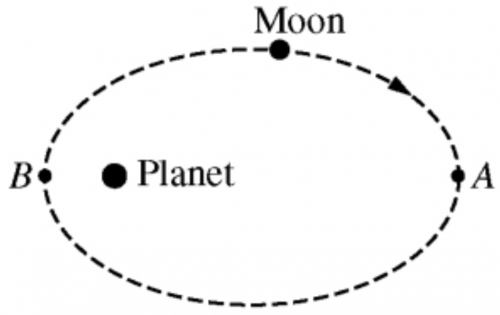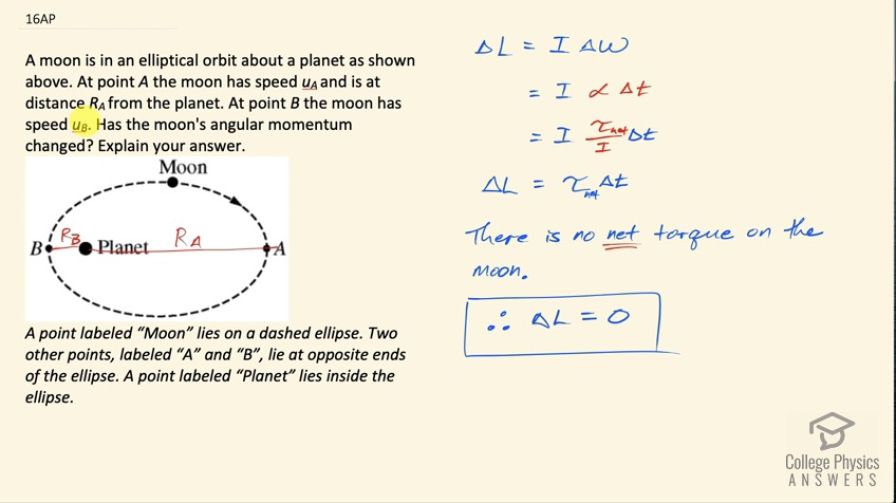Question
A moon is in an elliptical orbit about a planet as shown above. At point the moon has speed and is at distance from the planet. At point the moon has speed . Has the moon's angular momentum changed? Explain your answer.

Final Answer
There is no net torque on the system, so there can be no net change in angular momentum.
Solution video
OpenStax College Physics for AP® Courses, Chapter 10, Problem 16 (Test Prep for AP® Courses)

vote with a rating of
votes with an average rating of
.
Video Transcript
This is College Physics Answers with Shaun Dychko. A moon is orbiting a planet; in position A, it has a speed u A and at position B, it has speed u B and it's a distance R A from the planet at position A and R B at position B and the question is does the moon's angular momentum change as it does a complete orbit? So changing angular momentum requires a changing angular velocity and we multiply that by the moment of inertia. Change in angular velocity requires an angular acceleration to be applied for some amount of time and we multiply α by Δt to find that total change in angular velocity; angular acceleration is net torque divided by moment of inertia and these moment of inertia factors cancel and we are left with change in angular momentum then is net torque multiplied by time but there is no net torque in the system because while it's true that the planet's gravity pointing straight to the planet is not gonna be strictly perpendicular to the moon's velocity at this position here since this is an ellipse and not a perfect circle and so there's going to be some torque here that will be compensated for once the moon gets to the opposite side of the ellipse, there will be a torque in the opposite direction. So for every torque that exists on one part of the orbit, there's an equal magnitude but oppositely directed torque on the other side of the orbit. So there's no net torque and with no net torque, there's no change in angular momentum.